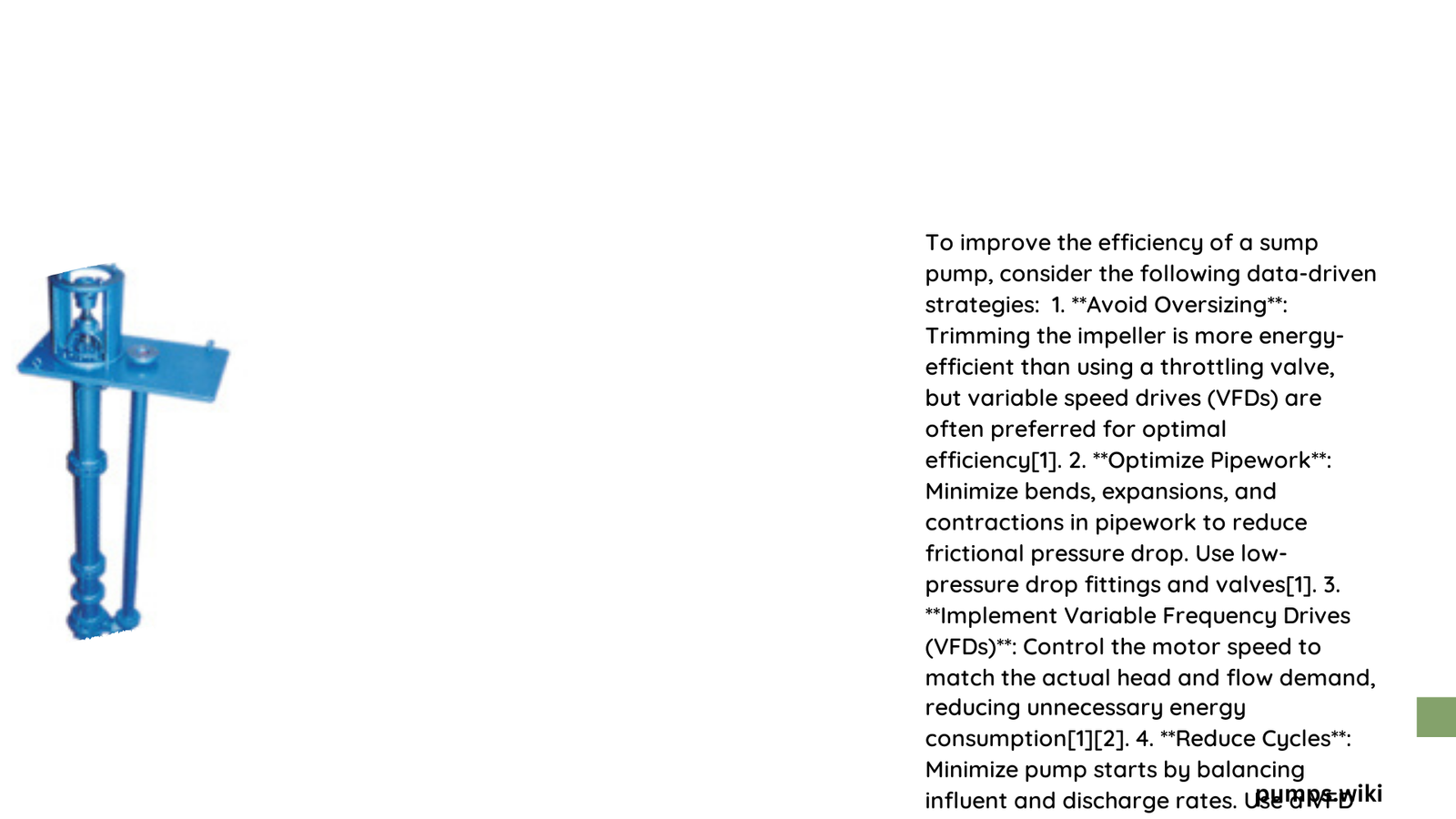Improving the efficiency of a sump pump is crucial for maintaining a dry basement and preventing water damage. Regular maintenance, proper installation, and strategic upgrades can significantly enhance your sump pump’s performance. This comprehensive guide provides expert tips and techniques to optimize your sump pump’s efficiency, ensuring it operates at peak performance when you need it most.
What Are the Key Factors in Sump Pump Efficiency?
Sump pump efficiency relies on several factors:
- Regular maintenance
- Proper installation
- Correct sizing
- Effective float switch operation
- Reliable backup systems
Let’s dive into each of these aspects to understand how they contribute to improving your sump pump’s efficiency.
How Can Regular Maintenance Boost Sump Pump Performance?

Regular maintenance is the cornerstone of sump pump efficiency. Here’s a breakdown of essential maintenance tasks:
Cleaning the Sump Pit
- Frequency: Every 6 months to 1 year
- Tools needed: Shop vacuum, gloves, bucket
- Procedure:
- Remove the pump from the pit
- Clear debris, sediment, and leaves
- Vacuum the pit thoroughly
- Replace the pump
Inspecting the Discharge Pipe
- Frequency: After heavy rains
- Tools needed: PVC cement, wrench
- Procedure:
- Check for leaks at joints and connections
- Reseal problem areas with PVC cement
- Feel the pipe after pump runs to check for clogs (it should be cool)
Testing the Check Valve
- Frequency: Every 6 months
- Tools needed: Water
- Procedure:
- Pour water into the indoor portion of the discharge pipe
- Ensure no backflow into the sump pit
- Replace the valve if backflow occurs
By following these maintenance routines, you can prevent clogs, reduce wear and tear, and ensure your sump pump operates efficiently when needed.
What Role Does Proper Installation Play in Sump Pump Efficiency?
Proper installation is crucial for optimal sump pump performance. Here are key aspects to consider:
Discharge Pipe Installation
- Optimal diameter: Match the pipe size to the pump (e.g., 3-inch pipe for a 3-inch pump)
- Ideal length: As short as possible while directing water away from the foundation
- Proper slope: 1/4 inch per foot for effective drainage
Common Installation Pitfalls to Avoid
- Oversized piping: Requires higher velocity to prevent clogging
- Undersized piping: Increases head pressure and reduces flow
- Improper slope: Can cause backflow or water accumulation
Ensuring correct installation can significantly improve your sump pump’s efficiency and longevity.
How Does Float Switch Adjustment Impact Sump Pump Efficiency?
The float switch is a critical component that controls when your sump pump activates. Proper adjustment is essential for efficiency:
- Ideal activation height: 6-8 inches above the pit bottom
- Ideal deactivation height: 2-4 inches above the pit bottom
To adjust the float switch:
- Locate the float switch on the pump or water surface
- Adjust the switch to trigger at the ideal heights
- Test by manually lifting and releasing the float
Correct float switch adjustment prevents frequent cycling, which can lead to motor burnout and inefficiency.
What Backup Systems Can Enhance Sump Pump Efficiency?
Backup systems are crucial for maintaining efficiency during power outages or primary pump failure. Consider these options:
| Backup System Type | Pros | Cons | Average Cost |
|---|---|---|---|
| Battery Backup | Works during power outages | Requires regular battery maintenance | $500 – $2,000 |
| Water-Powered | No electricity needed | May not be suitable as primary pump | $1,000 – $3,000 |
Installing a reliable backup system ensures continuous protection against flooding, even in challenging conditions.
How Can You Optimize Sump Pump Sizing for Maximum Efficiency?
Choosing the right size sump pump is crucial for efficiency. Consider these factors:
- Basement size: Larger basements require higher capacity pumps
- Water table level: Higher water tables need more powerful pumps
- Typical rainfall: Areas with heavy rainfall require higher flow rates
Consult with a professional to determine the optimal pump size for your specific needs. An appropriately sized pump will operate more efficiently and have a longer lifespan.
By implementing these strategies and maintaining your sump pump regularly, you can significantly improve its efficiency, ensuring your basement stays dry and protected from water damage.
References:
1. Flow Solutions: Tips to Maximize Submersible Pump Performance
2. Today’s Homeowner: Maintaining an Efficient Sump Pump: A Homeowner’s Guide
3. Invisible Excavations: Your Complete Sump Pump Maintenance And Repair Guide
